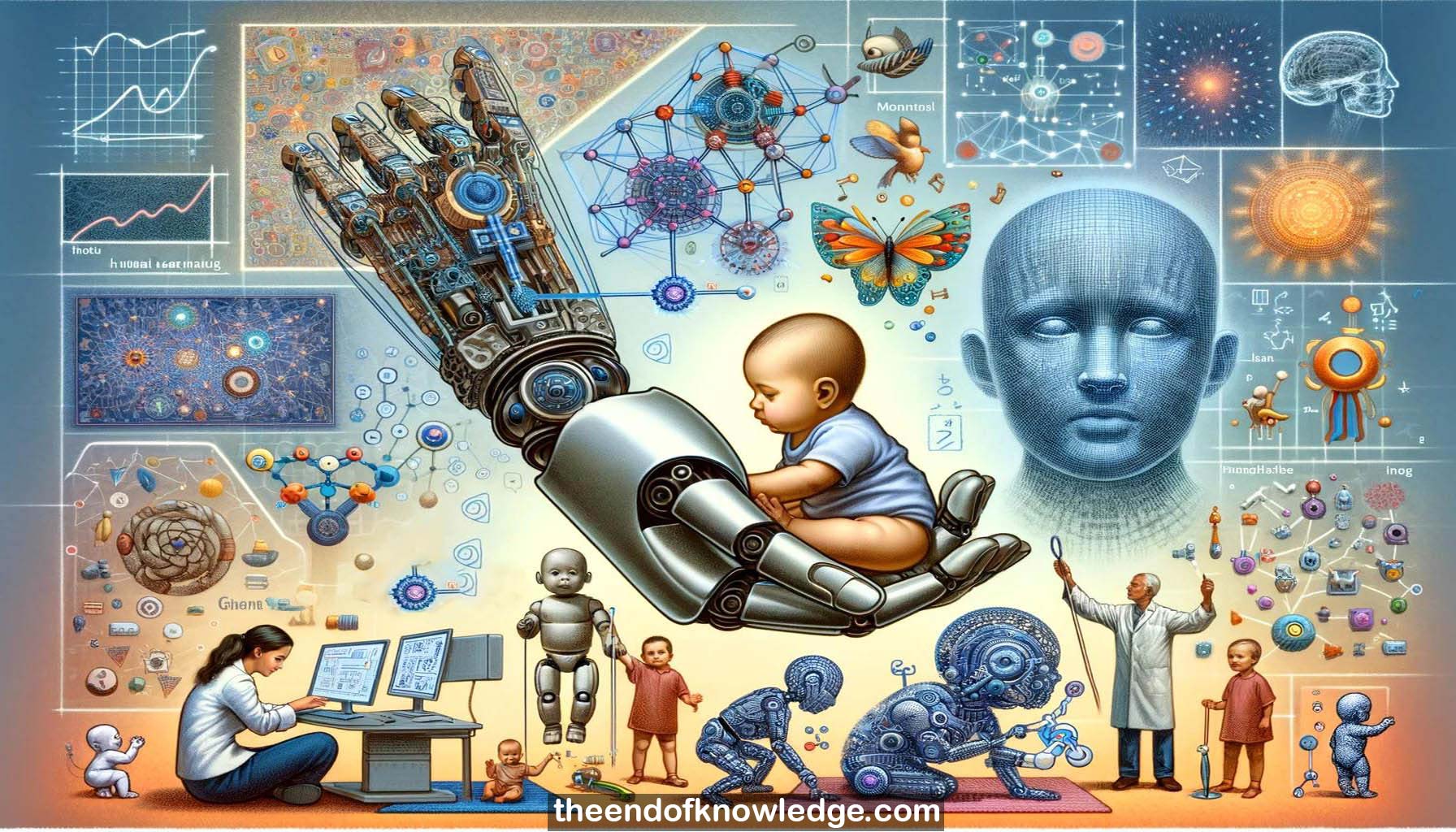 >
>
Concept Graph & Resume using Claude 3 Opus | Chat GPT4 | Gemini Adv | Llama 3:
Resume:
1.-Children are extraordinary learners who efficiently acquire everyday skills autonomously and developmentally, without external engineers retuning hyperparameters for each new task.
2.-Developmental robotics studies how developmental structures form and their potential role in enabling skill learning under time, energy and computation limits.
3.-Researchers develop algorithmic models of human development to understand it, apply insights to AI/ML for more flexible machines, and develop educational technologies.
4.-Body morphology, cognitive biases, social guidance, and intrinsic motivation are developmental forces studied that act as guidances or constraints over learning.
5.-Children engage in curiosity-driven exploration, being intrinsically interested in novelty, cognitive dissonance, surprise and optimal challenge, as discussed by psychologists since the 1940s-50s.
6.-A framework views the child as a sense-making organism exploring to make predictive world models and control the world via intrinsically motivated experiments.
7.-The learning progress hypothesis proposes interestingness of an experiment is proportional to the amount of change in prediction or goal achievement errors.
8.-Researchers use robotic playgrounds as modeling tools to study mechanisms enabling children's discoveries in high-dimensional environments, like discovering affordances and speech communication.
9.-Intrinsic motivation systems use ingredients like dynamic movement primitives, object-based perception, self-supervised forward/inverse model learning, episodic memory, and autonomous learning curriculum organization.
10.-Two proposed ways to measure interestingness for exploration are learning progress in forward models to choose policy parameters, or in inverse models for goals.
11.-Prediction experiments sample policy parameters in forward model regions with high learning prediction progress. Goal exploration samples target descriptors maximizing competence progress.
12.-Splitting parameter/goal spaces into regions, monitoring learning progress in each, and focusing exploration on high progress regions enables efficient learning in high dimensions.
13.-Modular goal exploration in robots efficiently learns to discover and control different objects by focusing on those providing maximal learning progress.
14.-Curiosity-driven exploration of a forward model is less efficient than goal exploration due to redundancy and inhomogeneities typical in robotic spaces.
15.-Goal exploration incentivizes being good on average at producing diverse effects, while forward model exploration may only learn many ways to produce few effects.
16.-Learning disentangled goal space representations from pixels is possible using beta-VAE but more difficult in realistic robotic setups than using object-based representations.
17.-A vocal development model using curiosity-driven learning reproduces the developmental stages of infant vocalizations, including the shift from self-exploration to imitation.
18.-Developmental trajectories emerging from the model exhibit both regularity in typical stage order and diversity in individual differences, matching child development.
19.-Multi-agent simulations with intrinsically motivated vocal learners playing language games lead to synchronized emergent communication systems mapping well to world language distributions.
20.-New human behavioral paradigms study free exploration across many tasks, finding subjects focus on levels of intermediate complexity corresponding to maximal learning progress.
21.-Curiosity-driven algorithms can generate personalized curricula for human learners that maximize learning efficiency and motivation, such as for primary school mathematics.
22.-For each student, the system tracks learning progress across exercise properties and incrementally proposes exercises maximizing progress, outperforming expert-designed fixed progressions.
23.-Variations of the algorithm result in children being more intrinsically motivated about learning mathematics compared to an expert-designed "oracle" algorithm.
24.-Spontaneous exploration plays a fundamental role in development that is not yet well understood or studied in machine learning but presents an important future path.
25.-Autonomous goal exploration and learning progress enable real-world robots to efficiently learn complex skills in high dimensions by self-organizing developmental trajectories.
26.-The same mechanisms can model the self-organization of infant development, discovery of tool use, and aspects of language acquisition.
27.-Educational technologies can be improved by applying curiosity-driven algorithms to generate personalized curricula adapted to each learner's progress across multiple dimensions.
28.-Basic speech communication can bootstrap without initially requiring mental models of others as agents, which may emerge more easily after interaction structures develop.
29.-Learning inverse models for goal exploration currently relies on state representations and similarity metrics, which can be learned in embodied agents leveraging time-correlation structure.
30.-Ongoing work focuses on learning distance functions and representations that enable curiosity-driven exploration and learning without externally provided goal spaces, a key challenge.
Knowledge Vault built byDavid Vivancos 2024